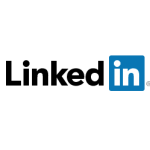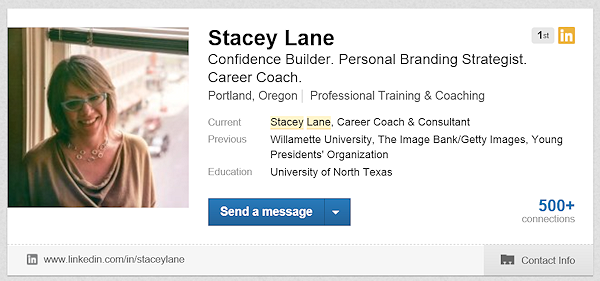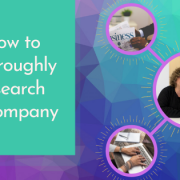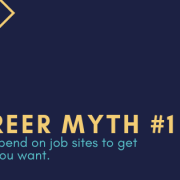Successful LinkedIn Headlines (And Some Basics for You to Improve Yours)
LinkedIn Let’s start with your headline in LinkedIn. I started this blog writing about the summary section because I thought Headlines were self-explanatory. Step back. Regroup. I can’t overlook Headlines, in all good conscience. They are super important when it comes to branding and positioning.
Let’s start with your headline in LinkedIn. I started this blog writing about the summary section because I thought Headlines were self-explanatory. Step back. Regroup. I can’t overlook Headlines, in all good conscience. They are super important when it comes to branding and positioning.
So I’m writing all about headlines with the promise that the next post will be about summaries. One last thing about summaries though — sometimes you’ll need to write your summary to get inspired as to what your headline should be — don’t get frustrated if your headline needs to be tweaked after you read my next blog post. Think of your headline and your summary as working together, OK?
What’s that? You don’t know what I mean by headline? Don’t feel silly for asking… we’re here to learn. The headline is what appears under your name on LinkedIn. It’s 120 characters in length. Here’s mine: Confidence Builder. Personal Branding Strategiest. Career Coach.
Why did I choose to use a series of words rather than my “job title” such as “Career Coach and Consultant” or “Self-Employed Career Coach?” It’s all about the audience. If someone is only going to glance at my LinkedIn profile, I want to clearly communicate my specialty as a career coach.
Self-employed? Including that might help distinguish me from career coaches who work at large firms, but do clients care? Nope. I also don’t include that I’m a certified. Why? In all the years I’ve been doing this, no one has ever asked me if I’m credentialed (they’re much more fascinated that I did my undergrad in Canada and my graduate degree in Texas).
I also could have included a couple of other phrases that I use in other places like “resume wordsmith” and “networking smarts.” I’m using less than half of the allowed 120 characters, after all. I’ve chosen to be more precise. There are lots of flavors of career coaches and it’s my goal not to make people work too hard to figure out my flavor of coaching (Clearly, I’m salted caramel with dark chocolate flakes.)
OK, let me give you the secret sauce for headlines I’ve used with lots of clients:
Rule to Break #1: Headline must be your current job title or position.
Someone in my network has “Strategic Communications Professional” as her headline. This is not her actual job title. Again, she is currently a project manager for a communications firm. Her headline is broader than her job title – smart strategy when your experience is broader than your current job title.
Take a look at another one of my contacts:
Andy Pollock’s LinkedIn profile
He’s using most of his 120 characters and he’s done a bunch of research to figure out the appropriate keywords that will help his profile appear in the search rankings. He’s also in transition. Notice, no mention of being unemployed or “looking” in his headline. See rule #2.
His headline rocks for a few reasons – it brands him effectively based on his past experience. He’s done a number of things within marketing and his headline reflects the scope of his experience. Now, Andy’s lucky. He’s got a great thread of experience – all under the marketing umbrella. If you have a wide variety of experience, but lack the clear thread of a particular industry or field, be careful not to get too diluted with your headline. In this case, it may need to be broader.
Here’s a great example from a career changer who is using her headline very effectively:
Traci Weishaar’s LinkedIn profile
LinkedIn Headline Rule to Break #2: If you’re unemployed or changing careers, make sure people know you’re looking (headline).
No. Look more closely at both Andy and Traci’s profiles. Both of them are researching options right now (I hesitate to say “looking” because they are approaching their searches very strategically – woo-hoo!)
The main reason why you don’t want to mention your current status – LinkedIn isn’t just about networking to find a job or get a lead. Really. If that’s what you think LinkedIn is – a source to get you a job — please read a couple of basic networking books like Never Eat Alone or Monster Careers: Networking.
LinkedIn is a networking tool and as such, you’ll need to figure out how to be a giver AND taker. Using your headline to highlight what you’re looking for makes it seem like you’re a taker and the only reason you’re on LinkedIn is to network for a new job. Turn off.
LinkedIn Headline Rule to Break #3: Your headline should be generic and straightforward.
There’s a fine line between generic and boring. The headline is about differentiating yourself. Straightforward is good, but sometimes choosing a different headline can help you stand out. Remember I said you don’t have to use your job title. If you choose to add something creative, like “Director of Fun and Interesting Experiences” (event planner) make sure this is the professional brand you’re trying to convey. Sometimes cutesy turns into annoying. Adding buzz words, like out-of-the-box or visionary leader, can turn you into a cliché.
Here’s a great headline for someone who is self-employed as an educational consultant. What the heck does an educational consultant do? Her headline is so awesome because it fills-in-the-blanks and now you know, right?
Deborah Thomason’s LinkedIn profile
Are we connected on LinkedIn? If not, send me a request. Let me know that you read this blog, OK? I like feeling connected.





